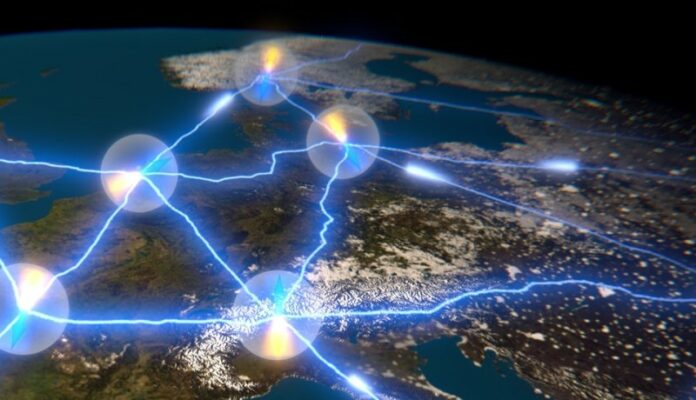5G is not simply the latest mobile standard – it represents an entire technology stack that will enable wireless networking on a scale never seen before. It is time to recognize 5G’s full potential, demands Dr. Christoph Dietzel, Global Head of Products and Research at DE-CIX – the leading operator of Internet Exchanges in the world.
5G will bring superfast Internet to our smartphones – that is the way people still often see the new technology. That is how it is being heavily promoted. Almost everyone knows the term, yet only a few can conceive of what the transmission standard really means. Use cases for wireless data transfer will extend far beyond mobile Internet for smartphones. In a future powered by 5G, we will be able to experience what this technology will allow us to achieve. This is because 5G is not just a new generation of mobile connectivity, but an entire technology stack. So far, only a part of that is currently being used productively, and in the future a range of exciting use cases will emerge.
But what makes 5G so special? In contrast to earlier generations of mobile networks, 5G is about combining different standards with various features on multiple layers. This includes improving mobile broadband, optimizing machine-to-machine communication for massive arrays (Massive MIMO) and providing ultra-reliable low-latency communications (uRLLC) for time-critical use cases. The performance is on a scale never achieved before: a 5G infrastructure will allow the connection of up to one million devices per square kilometer with a data transfer rate of up to 20 Gbit/s. Latency times of only around one millisecond will enable even highly critical use cases such as the provision of modern healthcare services in a connected ambulance on the way to hospital. Use cases in which every millisecond counts.
When we think about devices, we should not restrict ourselves to the mobile phones, tablets, laptops, and wearables which we all know as connected devices in our private and professional lives. 5G will show its strengths in particular in industry, in urban infrastructure and in the transport sector. Thanks to its wireless technology, so many more connected sensors can be incorporated into a limited area than would be possible in cabled alternatives or over normal Wi-Fi. This will benefit especially Industry 4.0 and smart factories, where machines, robots and autonomous vehicles can finally make the most of ultra-scalable high-performance wireless connectivity. For this purpose, factory operators can set up their own networks, separated from the public mobile networks, which would guarantee data sovereignty and security.
In the future, 5G will be found on every highway: this type of wireless data transfer offers the basis for safe navigation and communication between autonomous vehicles. Given the need for passenger safety, autonomous mobility comes with the highest requirements, not least in terms of latency. 5G comes as if on cue. Data cannot be transferred faster than the speed of light, not even in these infrastructures, and both data processing and data exchange will have to move a lot closer to the end user. Therefore, vast numbers of 5G antennas and a significantly denser set of interconnected data centers will be essential to power the highway of the future.
If we leave the highway and head for the city of tomorrow, 5G will continue to support our journey. There also, self-driving vehicles will have to navigate and communicate. A massive amount of information will therefore be exchanged between vehicles, servers, control systems and connected physical infrastructure. For such a smart city to function, a range of infrastructures will have to be interconnected: traffic control systems, lighting, electricity grids, the water mains, and so on. The potential arising from this reaches as far as individual smart homes, where connectivity will offer residents a higher level of comfort and convenience.
Other applications go even further: on a connected construction site, a 3-D model of the actual construction progress that is being continuously updated to reflect the status quo can provide greater insight for planning and controlling purposes. A large number of cameras and sensors would be necessary to regularly transfer data to the headquarters – an ideal use case for 5G. In agriculture, soil sensors can transmit real-time data to the farmers, who can then better plan when to fertilize and water their crops. Intelligent, autonomous agricultural machines, connected via 5G, have the capacity to take over the tillage of the land.
5G has enormous potential for secure and efficient digital use cases in widely differing branches, as well as in our private lives. It is important to understand that 5G is about more than just streaming videos in high definition. For these advantages to be realized, it will depend on the construction of infrastructures in the next few years that will enable this kind of data transfer. These range from antennas, fiber optic backhauls, and new decentralized data centers to the interconnection of different networks via a local Internet Exchange. We should also keep in mind that the 5G technology stack is not static and will continue to develop in the future. In previous generations of mobile standards, we saw this continuous development within each generation. After the 5G revolution, there will be a 5G evolution in which individual parts of the complex technology bundle will continue to evolve – and this will offer enormous potential.

